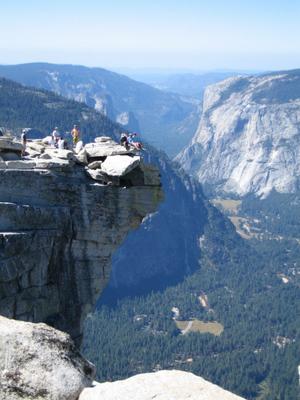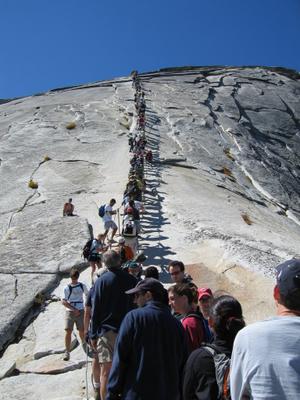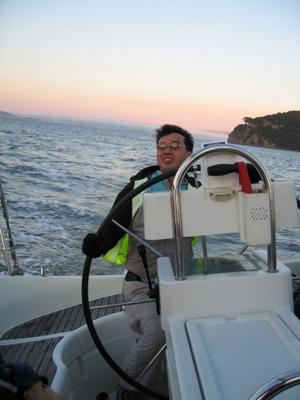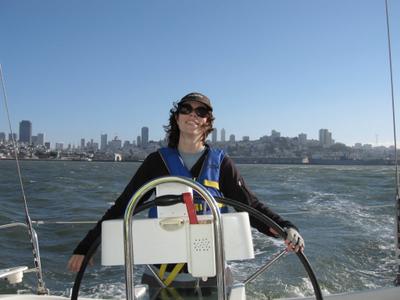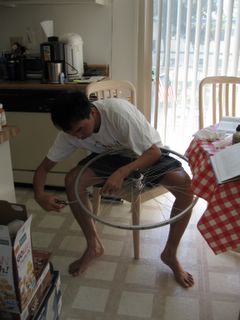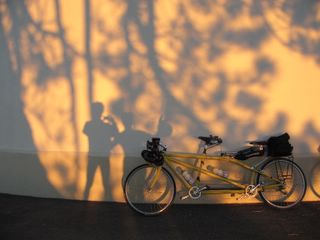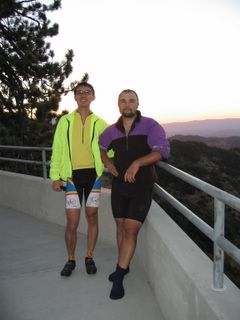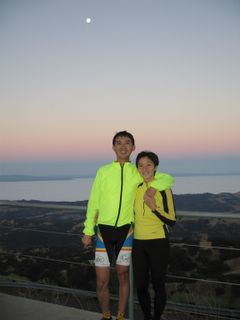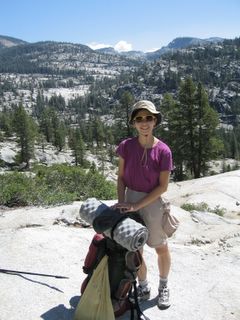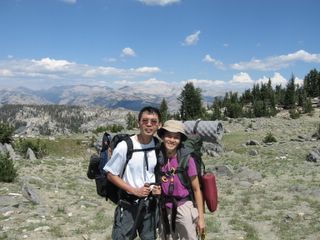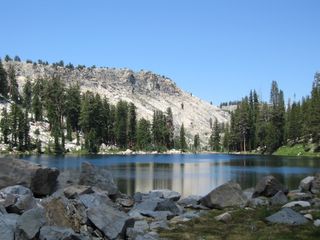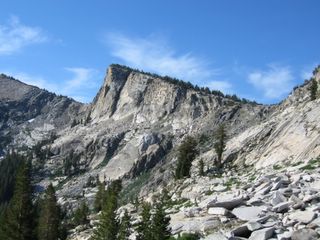S&S couplers considered uselessMy issue with the
couplers are that they're expensive and take forever to use. My first tandem had couplers and disassembly took 2 hours (with two of us on it), and assembly took an hour. And this was after we'd gotten good at it! And of course, take pictures when you first get the bike or you'll never be able to pack it away in the boxes ever again!
Anyway, after I'd had enough of this, we finally sold the bike, and bought an uncoupled tandem. We took it to Europe, and this time, wrapped pipe insulation around the tubes and took it with us on the plane unboxed. They bent the deraileur hanger, which cost me 5 Euros and 15 minutes to fix at a local bike shop. On the way back I removed the deraileur and had no damage to the bike. Packing time: 5 minutes. Unpacking time: 5 minutes. (Removing and putting pedals back on) All through Europe the trains took our tandem and us, no problems. All the
hotels also found a place to keep our bike.
When we flew to Colorado last year for a tour, we had to box up the bike. On the way there, we got a Santana cardboard box (cost: $45), and took it with us on the plane ($80). Packing time: 20 minutes. On the way back, we rode to the Denver International Airport, bought 2
United Airlines boxes ($20), packed the bike there and then (20 minutes), and brought it back to San Jose International. The airline scratched the front saddle and gave us a $20 United airlines coupon for a minor scratch, we reassembled the bike (10 minutes), and rode
home. In Colorado we just kept our bikes in the hotel room with us.
Both my experiences travelling with the uncoupled tandem were superior to travelling with the coupled tandem in a hard case. We spent less time packing, and more time enjoying the biking. (but note: we don't have a carbon fiber bike --- those might be more fragile, in which case you might have no choice but to go S&S)
Finally, this year, I went to Europe again on my single. One of my friends brought a single bike with
ritchey breakaway coupler. It took him more than an hour to assemble the bike! And more than 1.5 hours to take it apart at the airport. For myself, I would not pay the extra cost in either time or money, just to save the 15 Swiss Francs (30 for a tandem) it costs to take a bike on the train.
One of the couples in the club I'm in has both an S&S Santana and an uncoupled Calfee. They're signed up for 2 Erickson tours this September, and guess which bike they're bringing? The uncoupled Calfee. Even though they're retired and have lots of time, it's still less fun assembling and disassembling bikes than riding them, and they'd rather risk damaging their $10,000 bike.
I ran into a cyclist last year who said he surveyed every tandem couple he met while riding because he was shopping for a tandem. He said that whenever he asked about couplers for couples that had them, the usual response was "We thought they'd be a good idea, but we've
never used them." For those couples, maybe the cost of the couplers meant they didn't have any left over to take a vacation, but still.
There are a few good applications for couplers:
- Private plane owners. You're not going to fit a full sized tandem on a propellor plane, no matter what. (When travelling, every time I could have taken a prop plane I could also have taken a ferry, so it's not an issue that comes up unless you're a private pilot)
- Cruises. This was what S&S was designed for --- so you can bring your bike into your stateroom disassembled, get off the cruise boat, and assemble your bike and ride around town. A folding bike is probably cheaper for this task than adding S&S couplers to your Calfee.
- Frequent domestic flights. At $80 a pop, if you take 13 domestic flights, you've made back the cost of the couplers. ($2000 after you throw in the suit cases) Of course, after you've done the assembly once or twice, you might discover (as some folks I know did), that you'd rather *drive* to your domestic destination than go through the assembly/disassembly process again.
- You can't bear the thought of a $10,000 bike being protected by a $20 cardboard box, even though in my experience the $20 cardboard box in 10 years of travelling has never failed me.
I suspect that in practice, reason #4 is why folks buy S&S couplers.
[Update: there have been recent reports that even coupled S&S tandems are no longer escaping airline domestic charges. In addition, real world experiences have vindicated this article over and over again, as described in a
later blog entry]



